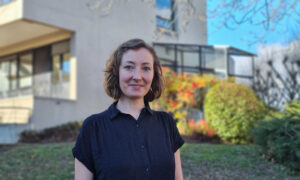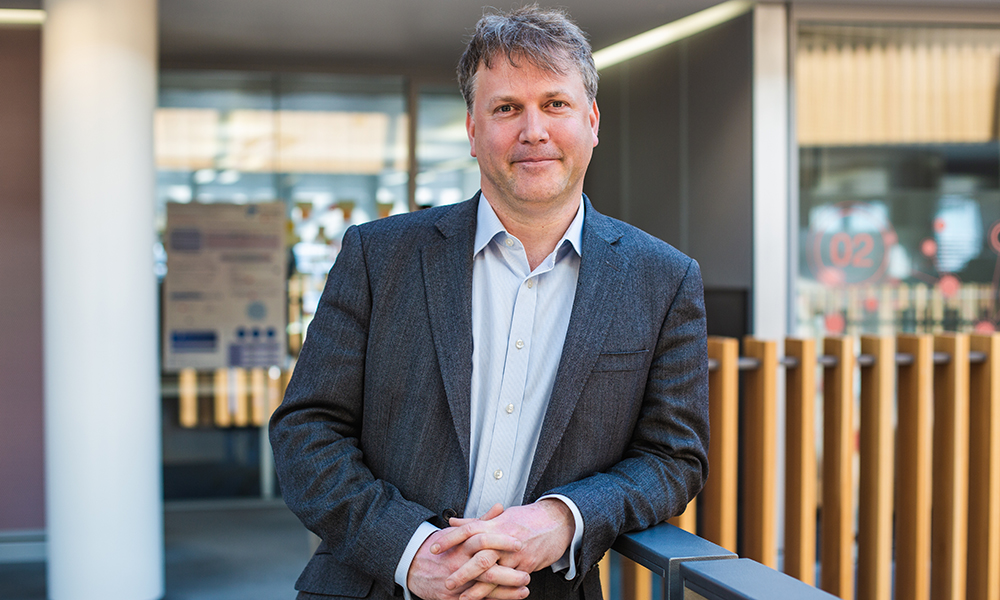
Read the latest Issue
In fact, they’ve been happening for years, and they help science advance

By Ewan Birney, EMBL Deputy Director General and Director of EMBL-EBI
We’re living through a fast-moving, historic scientific episode. The challenge during this time is that we’re bombarded with news that can seem contradictory, not to mention complicated. We’re all in a hurry to know more – to have the answers. What might have been a matter of conjecture and intellectual debate at a scientific conference gets rolled into Twitter hypothesising. And we all – scientists and non-scientists – see this quick-moving flow of ideas culminate in opinions and media coverage with varying levels of accuracy.
The good news is that scientists pretty consistently throw differing ideas at one another. And it is good news. In fact, it’s part of the whole “what if” underpinning scientific discovery.
As an expert in human and animal genetics and computational biology (read: data science in biology), I get a front-row seat to scientific debate – and participate directly in some in my own field. I’m Deputy Director General of the European Molecular Biology Laboratory, where I have the pleasure of being involved in a lot of science in a strategic way both within our organisation and internationally. I also see a need to help non-scientists navigate a world where the leading edge of science is developing almost before our eyes, as it is now with COVID.
Most scientists have sets of observations about the real world that are solid. They’ve been measured multiple times. Multiple groups have found the same thing, ideally measured in different ways.
Any understanding of the world has to be consistent – or at least maximally consistent – with these solid observations. When one set of solid observations does not fit, it feels very, very uncomfortable to a scientist.
“Solid observation” might be experiments, or observation of complex phenomena in the world, or even observation plus theory. While scientists may only be expert in specific areas where we’ve done our own analysis or experimentation, our training has given us an appreciation for the grey areas of science where foundational knowledge is a springboard into the unknown.
But it’s sometimes semi-instinctive to know what solid observations look like in science, in particular when you’re not part of a field (even as a scientist). One hallmark is that it’s the stuff experts agree on so quickly that they don’t even argue about it – solid enough that they move quickly on to areas of more productive disagreement. This is the first slightly counter-intuitive thing about understanding leading edge science: you need to consider what is not being said. That’s the solid ground. Unfortunately, it’s often quite hard to work out.
Only occasionally will solid ground shift significantly. It’s rare that time-tested solid ground disintegrates into pure quicksand – I can only remember a handful of examples from my own broad field, for example when people worked out that late blight in potatoes was not caused by a fungus at all, but a type of fungus-like microorganism called an oomycete (which explained why most antifungals didn’t work). Rather, the ground may shift slightly like moving tectonic plates (we thought this fitted here, but actually it fits like this). An example is how the view of whole-genome assembly methods changed from the 1990s (when it was considered almost impossible to assemble a large genome with repeats using shotgun sequencing, which involves producing many small fragments of DNA and matching the ends together) to the mid 2000s and now, when we have a far more nuanced view of how far a whole genome can be assembled using shotgun methods. If these sound like technical obscure debates, that’s because they are – except of course for the people in that particular field, where it becomes very important.
Far more common in science is the progressive solidification of observations around a solid core. That’s pretty much where we are with SARS-CoV-2 – progressive growth of observations, solidifying more and more ground around us.
In my head, on top of this solid ground of observations is a theory or model of how it all fits together – a sort of intellectual superstructure. This superstructure is personal to each scientist, because of our own experience with certain aspects of the debate. It’s that superstructure that helps us predict useful experiments or observations to do next, but we’re now treading in the marshy edges of the solid ground. And, though we may use different materials or techniques to move science forward, the approach is far from random. It has structure built from existing, accepted understanding, with foundations on the solid ground but trying to extend into the marshy regions outside.
But this is also the point where scientists start to diverge. Unlike solid observations, there will be much debate between scientists about particular aspects of their personal superstructures. Indeed, scientists will often rush their conversations straight to the points of disagreement, which can get quite heated!
Ultimately, this makes it seem like scientists disagree a lot, and often revel in it. But this is the nature of science and exploring the world. When done productively, the argument resolves down to: “If I’m right, this experiment or observation will say X, but if you’re right, it will say Y.” Indeed, many arguments are not even about what the future solid ground will be, but rather which bit of the marsh is the easiest to solidify, indicating the most productive experiments or analysis to do next.
Admittedly, sometimes this debate is not productive; sometimes arguments are stomped on too much. Sometimes arguments get so heated and personal, they halt progress.
Consequently, to read science from the outside, you need to find that common core of understanding resting on the common ground of agreed solid observations. Over time the common ground grows, and the edifice of common understanding grows with it, but nearly always there is more marshy ground to work out.
It’s a mistake to blindly trust one scientist over another, though we all carefully burnish our track records of being right. Theories and hunches can lead to dead ends, and new information often comes to light that disintegrates the ground underneath a carefully constructed new wall of our understanding. Any good scientist will change his or her mind in an instant when presented with clear data – there’s no point in being precious about wrong opinions, as you can’t move forwards.
Scientists who cling to their own opinions in the face of new data are either so conservative they can never progress, or they become pseudoscientists who perpetually discard anything that doesn’t fit with their assumptions. All good scientists get things wrong – regularly. However, good scientists know to move on quickly.
Speed can be a blessing and a curse, as we’ve learned during this age of COVID. As scientists, we must recognise the need to communicate clearly and include the solid ground of our work to give it – and the disagreements – context. When we talk to non-scientists, we have a particular responsibility to walk people over the solid ground we all agree on; it’s dangerous to assume other people will be so au fait with scientific culture as to hear the implied solid ground as scientists debate the edges. We shouldn’t stop debating and discussing – that would be the death knell for science – nor should we hide our debates, but we must put our debates in the context of what we agree on first.

About the author:
Ewan Birney is Deputy Director General of EMBL. He is also Director of EMBL-EBI with Dr Rolf Apweiler, and runs a small research group.
Looking for past print editions of EMBLetc.? Browse our archive, going back 20 years.
EMBLetc. archive